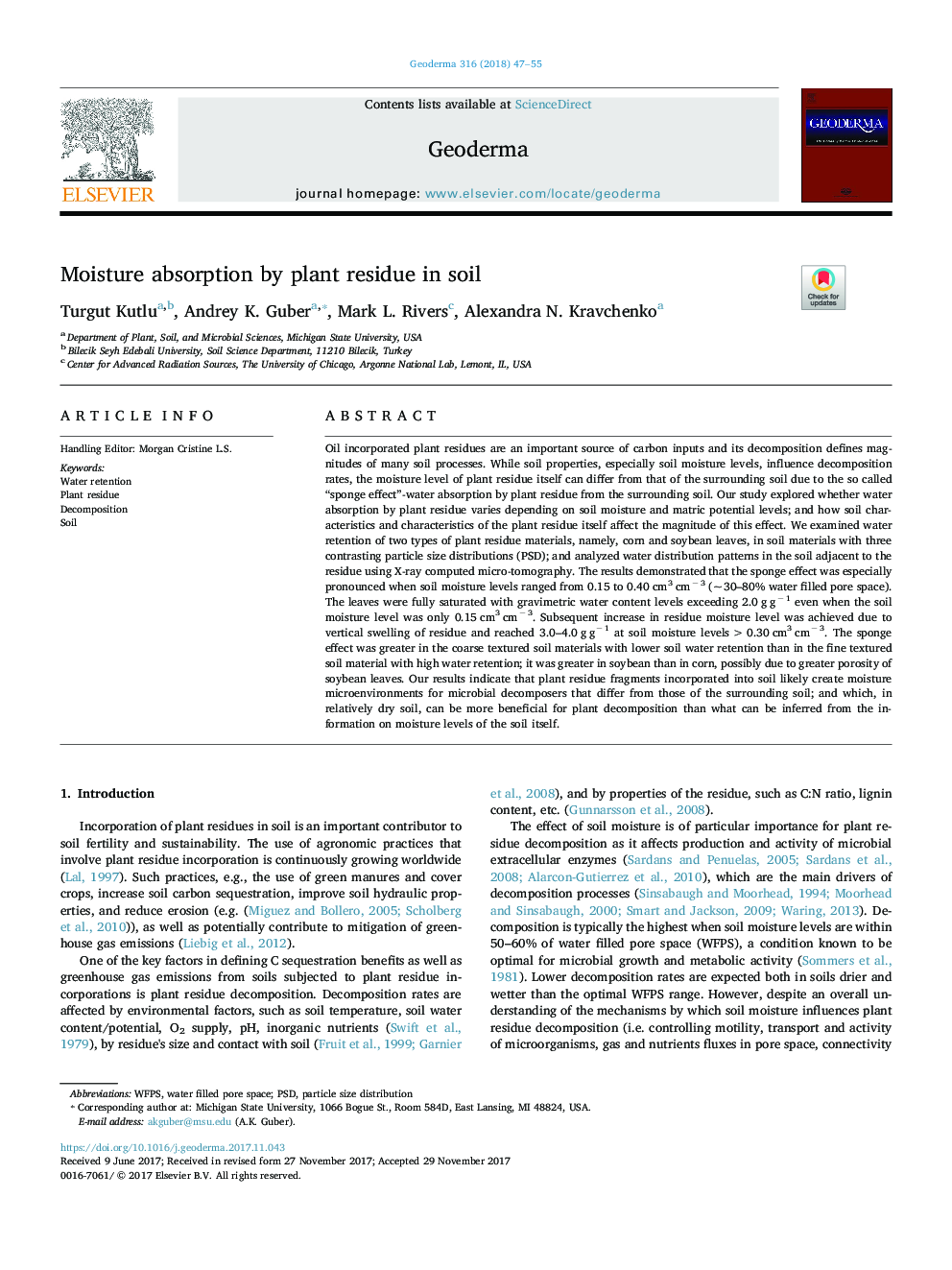| کد مقاله | کد نشریه | سال انتشار | مقاله انگلیسی | نسخه تمام متن |
|---|---|---|---|---|
| 8894221 | 1629401 | 2018 | 9 صفحه PDF | دانلود رایگان |
عنوان انگلیسی مقاله ISI
Moisture absorption by plant residue in soil
ترجمه فارسی عنوان
جذب رطوبت توسط باقیمانده گیاه در
دانلود مقاله + سفارش ترجمه
دانلود مقاله ISI انگلیسی
رایگان برای ایرانیان
کلمات کلیدی
موضوعات مرتبط
مهندسی و علوم پایه
علوم زمین و سیارات
فرآیندهای سطح زمین
چکیده انگلیسی
Oil incorporated plant residues are an important source of carbon inputs and its decomposition defines magnitudes of many soil processes. While soil properties, especially soil moisture levels, influence decomposition rates, the moisture level of plant residue itself can differ from that of the surrounding soil due to the so called “sponge effect”-water absorption by plant residue from the surrounding soil. Our study explored whether water absorption by plant residue varies depending on soil moisture and matric potential levels; and how soil characteristics and characteristics of the plant residue itself affect the magnitude of this effect. We examined water retention of two types of plant residue materials, namely, corn and soybean leaves, in soil materials with three contrasting particle size distributions (PSD); and analyzed water distribution patterns in the soil adjacent to the residue using X-ray computed micro-tomography. The results demonstrated that the sponge effect was especially pronounced when soil moisture levels ranged from 0.15 to 0.40 cm3 cmâ 3 (~ 30-80% water filled pore space). The leaves were fully saturated with gravimetric water content levels exceeding 2.0 g gâ 1 even when the soil moisture level was only 0.15 cm3 cmâ 3. Subsequent increase in residue moisture level was achieved due to vertical swelling of residue and reached 3.0-4.0 g gâ 1 at soil moisture levels > 0.30 cm3 cmâ 3. The sponge effect was greater in the coarse textured soil materials with lower soil water retention than in the fine textured soil material with high water retention; it was greater in soybean than in corn, possibly due to greater porosity of soybean leaves. Our results indicate that plant residue fragments incorporated into soil likely create moisture microenvironments for microbial decomposers that differ from those of the surrounding soil; and which, in relatively dry soil, can be more beneficial for plant decomposition than what can be inferred from the information on moisture levels of the soil itself.
ناشر
Database: Elsevier - ScienceDirect (ساینس دایرکت)
Journal: Geoderma - Volume 316, 15 April 2018, Pages 47-55
Journal: Geoderma - Volume 316, 15 April 2018, Pages 47-55
نویسندگان
Turgut Kutlu, Andrey K. Guber, Mark L. Rivers, Alexandra N. Kravchenko,
